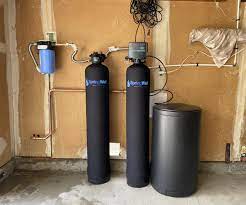Introduction
Installing a whole house water softener is a smart investment for homeowners looking to improve water quality and protect their plumbing system and appliances. In this article, we’ll guide you through the process of selecting, installing, and maintaining a water softener for your home.
Understanding Water Softeners
Hard water contains high levels of minerals like calcium and magnesium, which can cause limescale buildup in pipes, appliances, and fixtures. Water softeners work by removing these minerals through a process called ion exchange, resulting in softer, more manageable water that is gentler on your skin and hair.
Choosing the Right Water Softener
Before purchasing a water softener, consider factors such as your household size, water usage, and hardness level. Research different types of water softeners, including salt-based, salt-free, and dual-tank systems, to find the best option for your needs and budget.
Preparing for Installation
Before installing a water softener, assess your plumbing system and available space to ensure compatibility. Gather the necessary tools and materials, including piping, fittings, and a bypass valve kit. Choose a location for the water softener near the main water supply line and an electrical outlet.
Installation Steps
- Shutting off water supply: Turn off the main water supply to your home and drain the pipes by opening faucets.
- Mounting the water softener: Securely mount the water softener to the wall using brackets or screws, ensuring it is level and stable.
- Connecting pipes and fittings: Cut into the main water line and install the bypass valve, then connect the inlet and outlet ports of the water softener using pipes and fittings.
- Setting up the brine tank: Fill the brine tank with salt and water according to the manufacturer’s instructions, then connect it to the control valve.
Testing and Adjustments
Once the water softener is installed, flush the system to remove any air or debris. Adjust the settings and regeneration cycles as needed to optimize performance and efficiency. Conduct regular water tests to monitor the softening process and make adjustments as necessary.
Maintenance and Troubleshooting
To keep your water softener running smoothly, perform regular maintenance tasks such as replenishing salt, cleaning the brine tank, and checking for leaks or malfunctions. If you encounter any issues, consult the manufacturer’s manual or seek professional assistance for troubleshooting and repairs.
Benefits of Water Softeners
Investing in a whole house water softener offers numerous benefits, including softer skin and hair, cleaner dishes and laundry, and extended lifespan for appliances and plumbing fixtures. Enjoy the luxury of soft water throughout your home and say goodbye to the hassle of dealing with hard water problems.
Conclusion
Installing a whole house water softener is a straightforward process that can significantly improve the quality of your home’s water supply. By following the steps outlined in this article and investing in a quality water softener system, you can enjoy the benefits of soft water for years to come.

